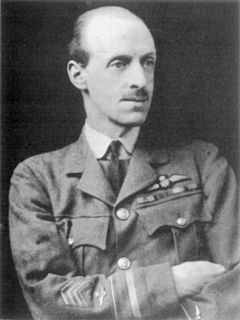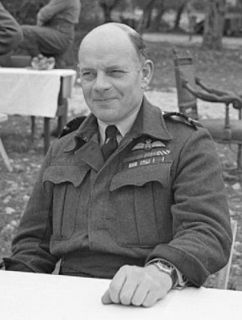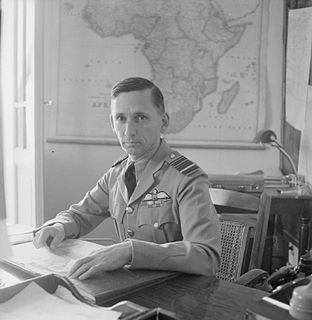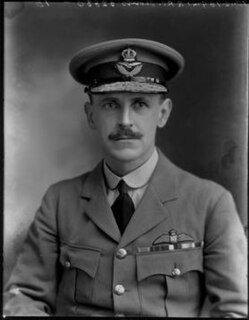The Directorate of Military Aeronautics was British War Office department responsible for military aviation before and during World War I. It functions were subsumed into the Air Ministry when the Royal Air Force was created in 1918.

The War Office was a Department of the British Government responsible for the administration of the British Army between 1857 and 1964, when its functions were transferred to the Ministry of Defence. It was equivalent to the Admiralty, responsible for the Royal Navy, and the Air Ministry, which oversaw the Royal Air Force. The name "War Office" is also given to the former home of the department, the War Office building, located at the junction of Horse Guards Avenue and Whitehall in central London.

Military aviation is the use of military aircraft and other flying machines for the purposes of conducting or enabling aerial warfare, including national airlift capacity to provide logistical supply to forces stationed in a theater or along a front. Airpower includes the national means of conducting such warfare, including the intersection of transport and war craft. Military aircraft include bombers, fighters, transports, trainer aircraft, and reconnaissance aircraft.

World War I, also known as the First World War or the Great War, was a global war originating in Europe that lasted from 28 July 1914 to 11 November 1918. Contemporaneously described as "the war to end all wars", it led to the mobilisation of more than 70 million military personnel, including 60 million Europeans, making it one of the largest wars in history. It is also one of the deadliest conflicts in history, with an estimated nine million combatants and seven million civilian deaths as a direct result of the war, while resulting genocides and the 1918 influenza pandemic caused another 50 to 100 million deaths worldwide.
The Directorate was headed by a Director-General. The following officers held the post:
- Sir David Henderson (1913-17) [1]
- J M Salmond (1917-18) [1]
- E L Ellington (1918) [2]

Lieutenant General Sir David Henderson, was the senior leader of British military aviation during the First World War, having previously established himself as the leading authority on tactical intelligence in the British Army. He served as the commander of the Royal Flying Corps in the field during the first year of the First World War and was instrumental in establishing the Royal Air Force as an independent service. After the war Henderson was the first Director-General of the League of Red Cross Societies.

Marshal of the Royal Air Force Sir John Maitland Salmond, was a British military officer who rose to high rank in the Royal Flying Corps and then the Royal Air Force. During the First World War he served as a squadron commander, a wing commander and then as General Officer Commanding the RAF on the Western Front towards the end of the war. He went on to be Air Officer Commanding British Forces in Iraq in the early 1920s when he halted a Turkish invasion and sought to put down a Kurdish uprising against King Faisal, the British-sponsored ruler of Iraq. He was Chief of the Air Staff in the early 1930s and bitterly opposed the position taken by British politicians at the World Disarmament Conference in Geneva, which would have led to the UK's complete aerial disarmament. In the event the talks broke down when Adolf Hitler withdrew from the Conference in October 1933.

Marshal of the Royal Air Force Sir Edward Leonard Ellington, was a senior officer in the Royal Air Force. He served in the First World War as a staff officer and then as Director-General of Military Aeronautics and subsequently as Controller-General of Equipment. In the inter-war years he held command positions in the Middle East, in India and then in Iraq. He served as Chief of the Air Staff in the mid-1930s and in that role he implemented a plan, known as 'Scheme F'. This scheme implemented an increase in the size of the Royal Air Force to 187 squadrons within three years to counter the threat from Hitler's Germany. He also broke up the command known as "Air Defence of Great Britain" to create RAF Fighter Command, RAF Bomber Command, RAF Coastal Command and RAF Training Command. He then served as Inspector-General of the RAF until his retirement in 1940.
In 1917 the post of Deputy Director-General of Military Aeronautics was established. The following held that post:
- W S Brancker (1917) [1]
- E L Ellington (1917-18) [2]
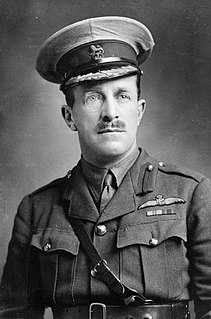
Air Vice Marshal Sir William Sefton Brancker,, commonly known as Sir Sefton Brancker, was a senior officer of the Royal Flying Corps and later Royal Air Force, and pioneer in British civil and military aviation.



